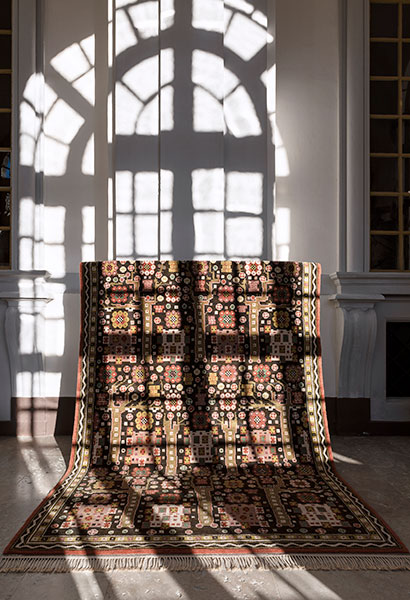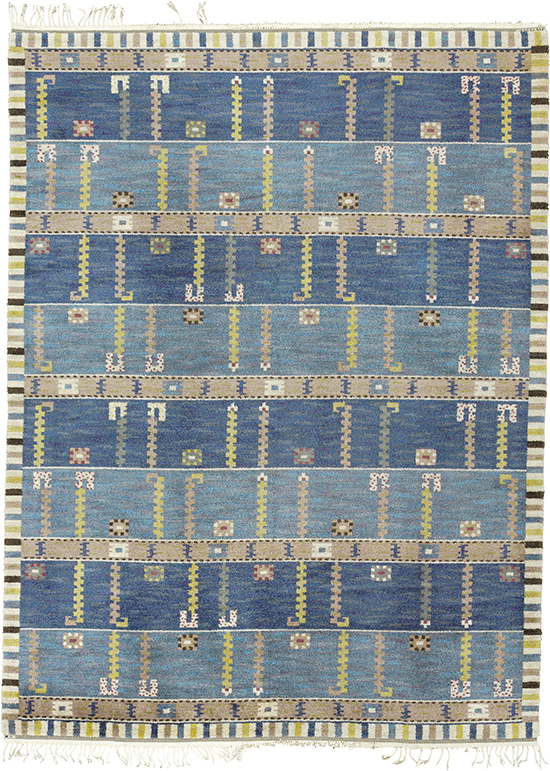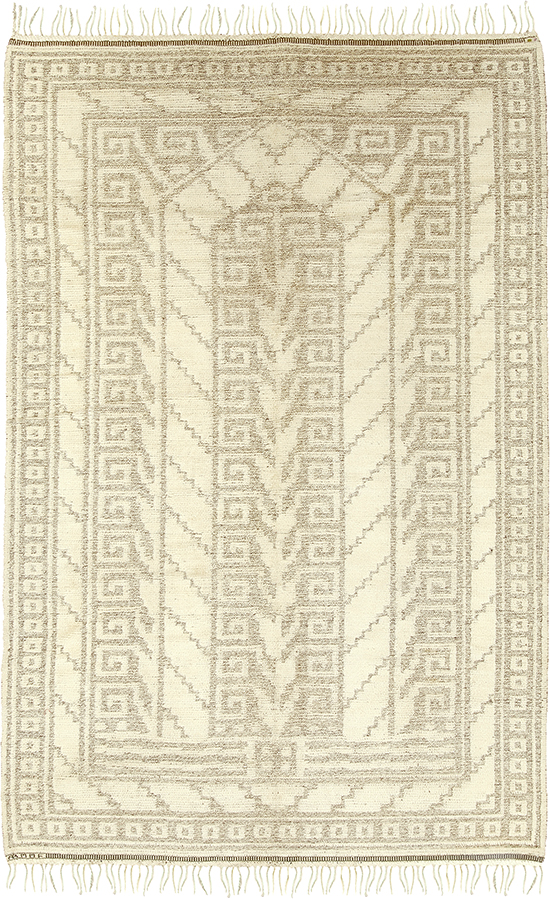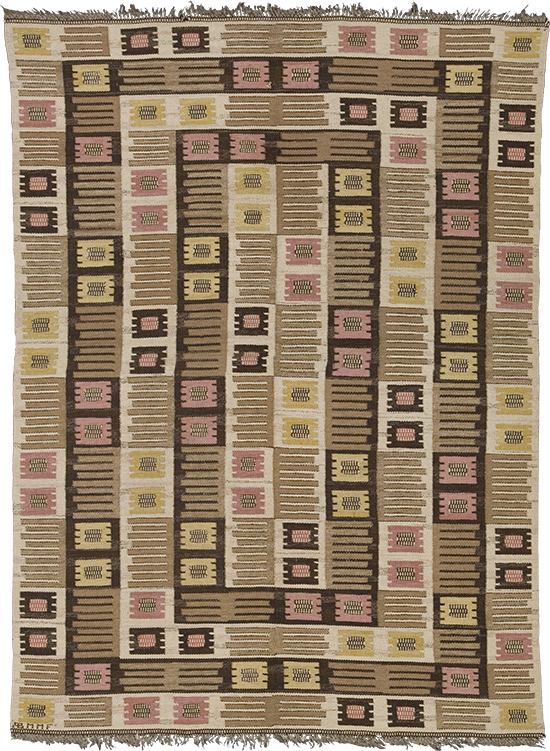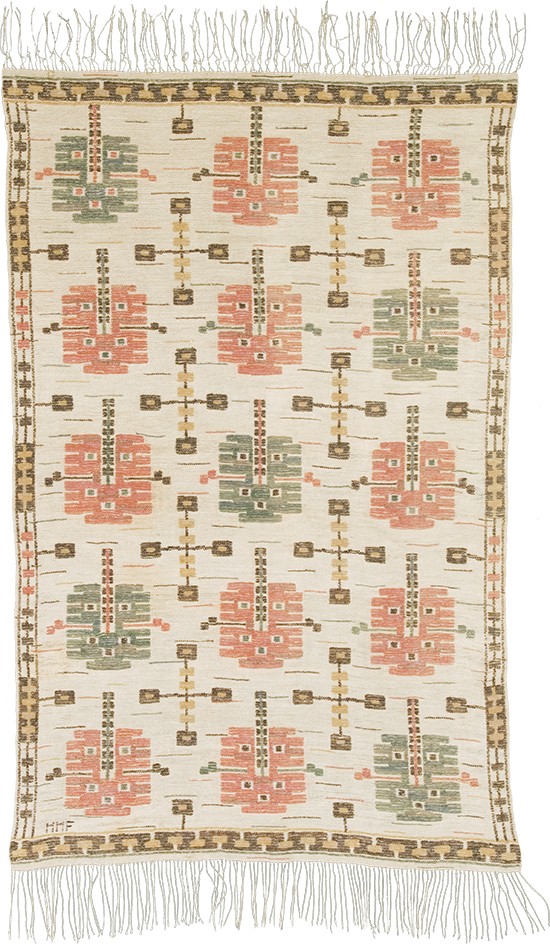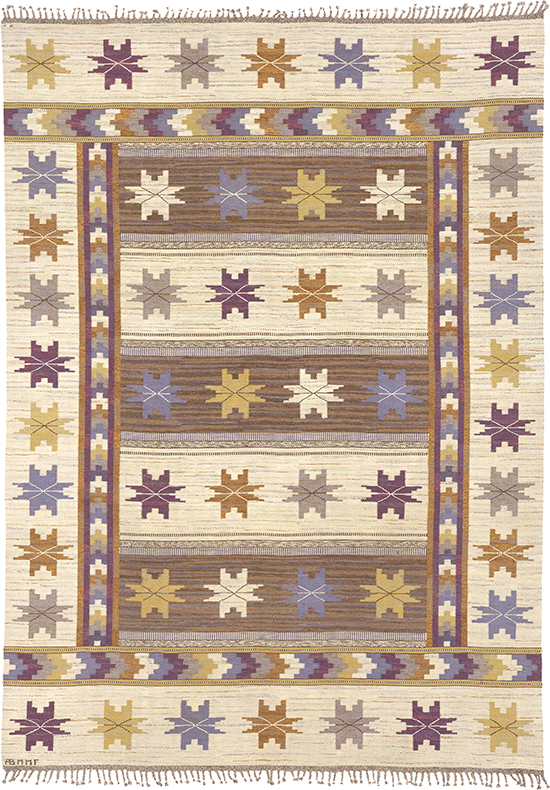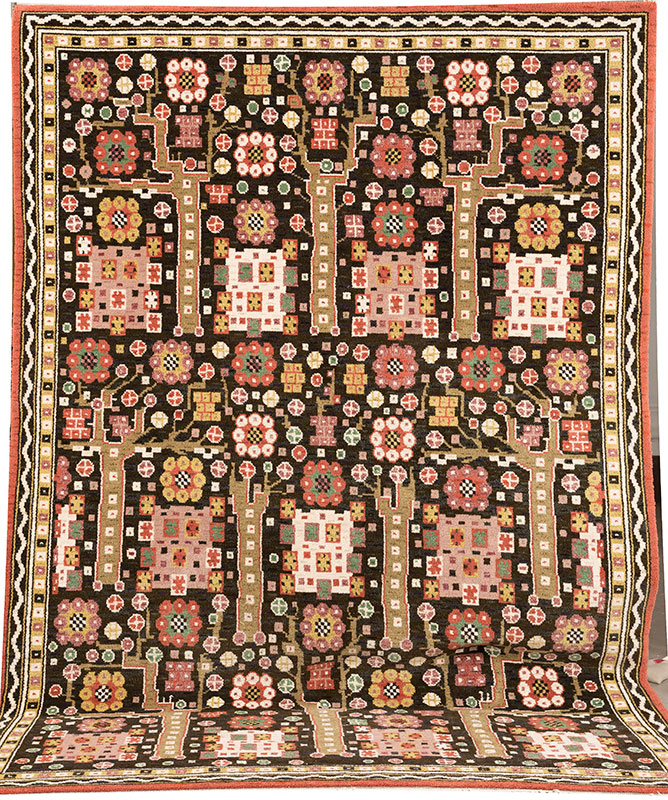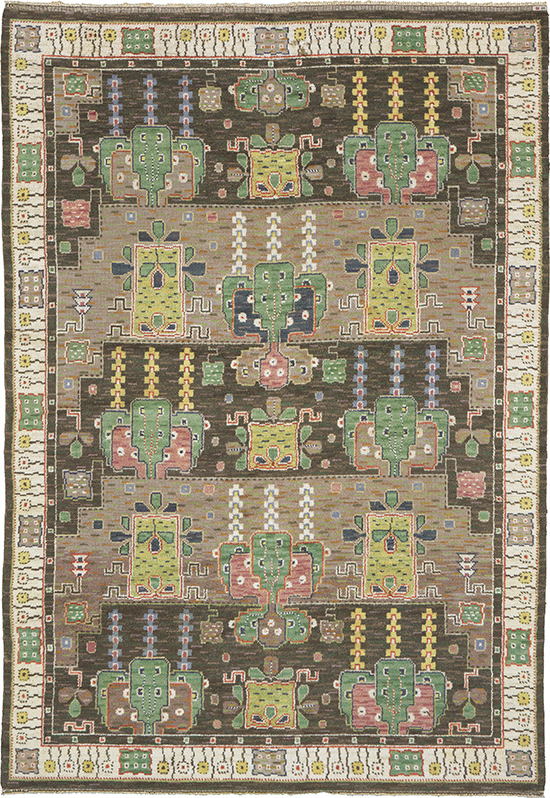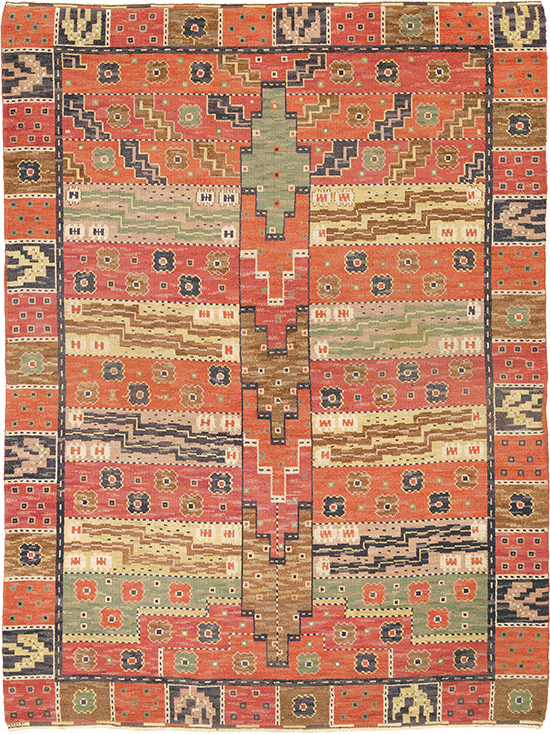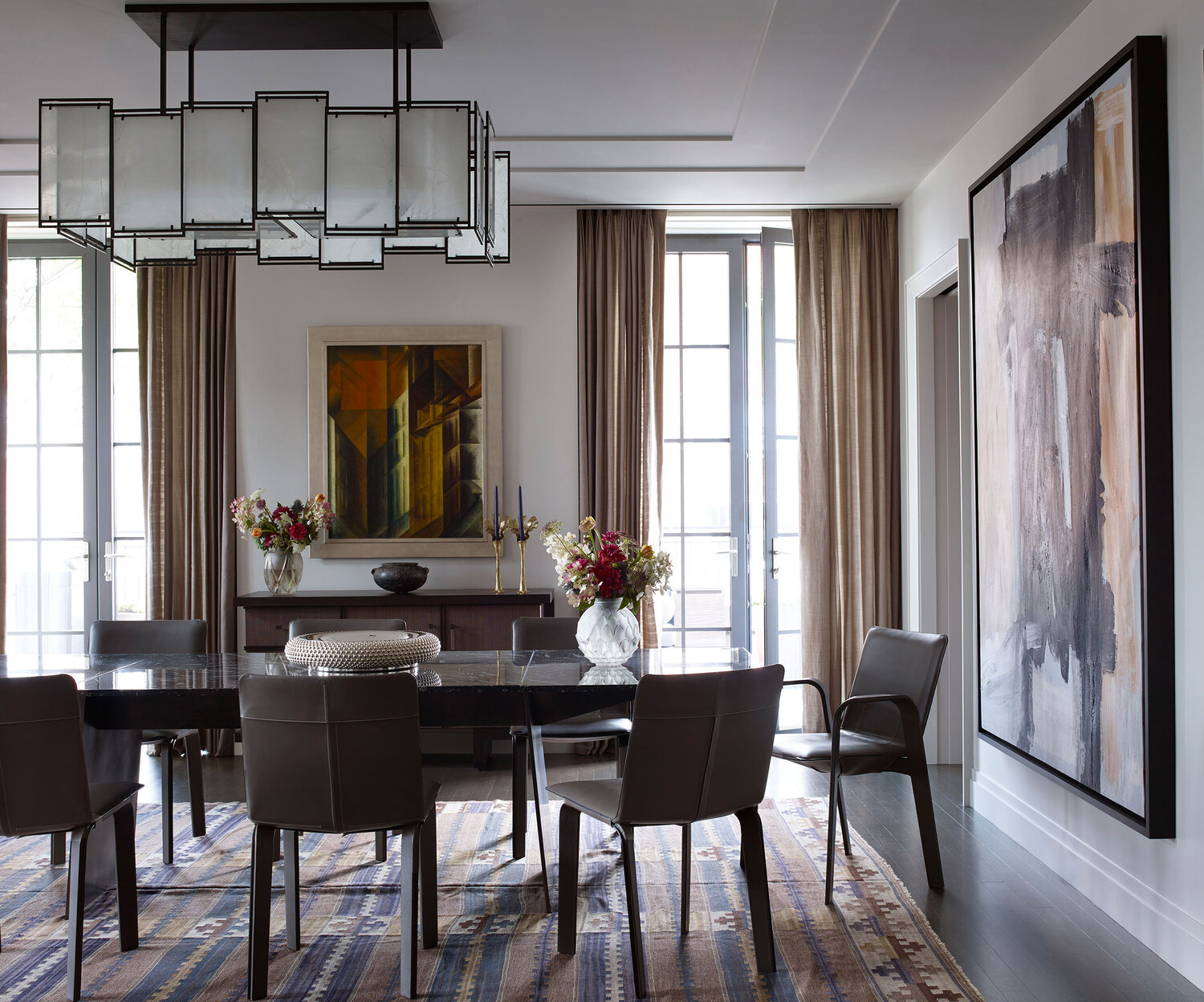February 18, 2020
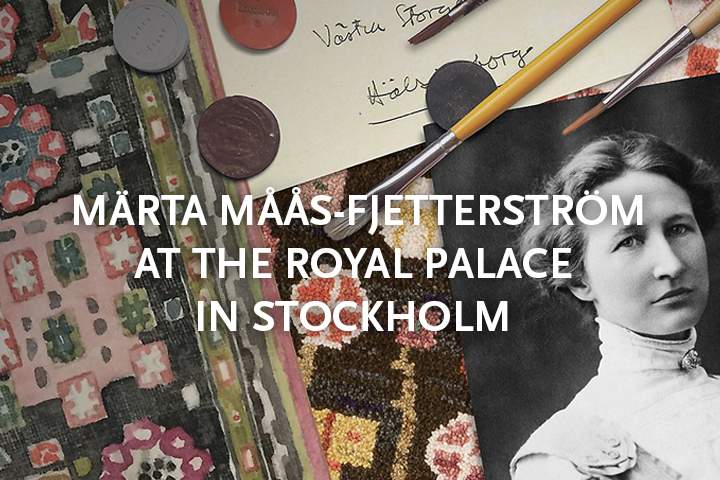
A selection of Märta Måås-Fjetterström's rugs from the Royal Collections. Together with external loans, the exhibition presents around sixty rugs reflecting Märta Måås-Fjetterström's output up until her death in 1941. Photo: Sanna Argus Tirén/Royalpalaces.se.
In honor of the centenary of the founding of Märta Måås-Fjetterström’s studio in Båstad, Sweden, the Royal Palace in Stockholm is putting on a major exhibition of this influential textile artist’s work. From October 2019 to April 2020, the public will have a chance to view a selection of works from the collection of the Swedish royal family. The royal collection of MMF works was started by King Gustav VI Adolf, who commissioned carpets for the private rooms in the royal palaces, where many remain to this day. The exhibition also includes her sketches and materials relating to her life and career, as well as design influences; the viewer is able to become truly immersed in the entire world of this great Modernist designer.
A selection of Märta Måås-Fjetterström's rugs from the Royal Collections.
Photo: Sanna Argus Tirén/Royalpalaces.se
Swedish Pile Rug #03391. 10'6" x 8'0" (320 x 244 cm)
Ståndaren, designed by MMF in 1928, is on view in Stockholm; this example is in the FJ Hakimian Collection. The Standing Flowers design was developed for the Swedish American Line’s M/S Kungsholm Gothenburg–New York route in the 1930s. A version was also woven for the Parliament House, Stockholm, and decorated King Gustaf VI Adolf’s library at Ulriksdal Palace.
Even with an entire century having passed since these carpets were first designed, they look as fresh as if they were composed just yesterday. For example, Märta Måås-Fjetterström was inspired to create the Vita Spetsporten (The White Gate) on a visit to Knossos, Crete. It was first woven for a 1934 exhibition in Stockholm, and then acquired by Nationalmuseum, Stockholm. The design has been woven in several variations. King Gustaf VI Adolf was fond of the pattern and kept a rug of this design at Sofiero Palace. He also presented another rug of the same design as a gift to Queen Elizabeth II when she visited Stockholm in 1956. This design, like many of the carpets included in the exhibition representing her best work, is also available in the FJ Hakimian Collection. We have one of the largest collections of MMF carpets available, and our collection includes a variety of her work, from her early folkloric Odin’s Hunt tapestry to the flat weaves that quote traditional Turkish kilims: bold Modernist-influenced works and beautiful expressions of Oriental motifs interpreted through Swedish design sensibilities.
Vita Spetsporten (The White Gate), designed by MMF in 1934
Swedish Relief Flossa Rug #03339. 10'0" x 6'8" (305 x 203 cm)
Nyponblomman (Rosehip), designed by MMF in 1932
Swedish Flat Weave Rug #22195. 9'8" x 7'1" (295 x 216 cm)
Nyponblomman, a carpet in soft, warm neutrals, was designed by MMF in 1932. It was inspired by the wild roses growing along the northern beach near Märta Måås-Fjetterström’s home and studio. Its stylized flowers and leaves are woven in muted colors and it is reminiscent of Turkish kilims that are made with a technique similar to the ancient Nordic rölakan flat-weave technique.
Daggkåpan (Birds), designed by MMF in 1929
Swedish Wall Hanging #22156. 6'0" x 3'10" (183 x 117 cm)
In addition to being a brilliant designer, Märta Måås-Fjetterström was an entrepreneur. In the second quarter of the twentieth century, when she was creating her masterpieces of Swedish Modernism, she was well-known and was being offered prestigious commissions. To Märta her carpets were like music—she was the “composer,” the weavers were the “musicians,” and the lucky buyers were “listening” to the creation when they walked over it and lived with it through the decades and seasons of their lives.
Höstmattan (Autumn Carpet), designed in 1918
Swedish Flat Weave #02745. 11'11" x 7'3" (363 x 221 cm)
Svarta Trädgårdsmattan (Black Garden Carpet), designed in 1923. Photo: Sanna Argus Tirén/Royalpalaces.se
A highlight of the Stockholm exhibition is the 1923 Svarta Trädgårdsmattan, or Black Garden Carpet. This gorgeous design was MMF’s favorite and is based on Persian garden carpets. It is quite similar to other Oriental-influenced carpets that she created around the same time, including the 1934 Örtagården carpet in the FJ Hakimian Collection.
Örtagården, designed by MMF in 1934
Swedish Pile Rug #03313. 9'3" x 6'9" (282 x 206 cm)
The Tornet, or Tower carpet, was designed in 1932. This masterpiece in both the exhibition and at FJ Hakimian is particularly wonderful because of its links to New York City. Måås-Fjetterström created it after a trip to New York in 1931 during which she visited the newly finished Empire State Building. Seeing the all these carpets in the exhibition together, Märta Måås-Fjetterström’s genius is on full display, and it is obvious why she is considered one of the masters of Modern design, collected by great institutions around the world including the Metropolitan Museum of Art and the Louvre.
Tornet (The Tower), designed by MMF in 1932
Swedish Pile Rug #03403. 11'8" x 8'9" (356 x 267 cm)
Swedish Flat Weave #02648 designed by Märta Måås-Fjetterström.
West Village Penthouse. Interior design by Wesley Moon. Photos by William Waldron

